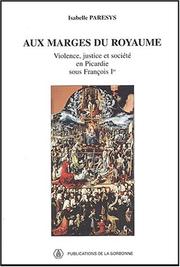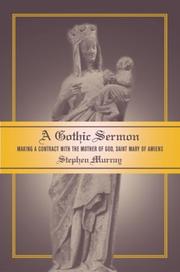| Listing 1 - 3 of 3 |
Sort by
|
Book
ISBN: 1912174677 9781912174676 Year: 2016 Publisher: Solihull, West Midlands : Helion & Company,
Abstract | Keywords | Export | Availability | Bookmark
 Loading...
Loading...Choose an application
- Reference Manager
- EndNote
- RefWorks (Direct export to RefWorks)
After the battle of Sedan on September 1, 1870 and the collapse of the Second Empire, followed by the investment of Paris, the Government of National Defense set about raising fresh armies. These had as their first objective the relief of the capital. The German troops covering the investment were stretched extremely thin until the fall of Metz at the end of October 1870. This released the forces around the city to move north and west to deal with the newly forming French armies. The German Campaign in the northeast of France was conducted by the First Army led by General Edwin von Manteuffel. Opposing him was the French Army of the North, initially commanded for a short time by General Charles Bourbaki. He was soon replaced by General Louis Faidherbe, who was sent far from Africa. The Campaign was fought to a large extent over the area of the Somme battlefields of the First World War, and the names of the towns and villages are grimly familiar with the resonance of what was to come. In 1914-1918, the direction of the fighting was on an east - west axis; in 1870 - 1871, it was north-south, with the line of the Somme being crucial to the outcome of the Campaign. The first major battle was the battle of Amiens on November 24; fought before Faidherbe's arrival, the Army of the North was led by the Chief of Staff, General Farre. It resulted in a German victory and the capture of Amiens. In December, Faidherbe advanced and took up a strong defensive position along the line of the River Hallue, where a fierce battle was fought on December 23. After the French retreat, Faidherbe regrouped, and advanced again, this time on Bapaume. Another fierce encounter followed on January 3, at the end of which each side believed itself to be defeated. Faidherbe was thwarted in his objective to lift the Siege of Péronne, which fell on January 9. By now the situation at Paris was desperate, and on January 15 Faidherbe began a march eastwards with a view to compelling the movement of part of the investing armies to meet his advance. This resulted in the crucial battle of Saint Quentin on January 19, in which the Germans were now led by the redoubtable General August von Goeben, who won a final and decisive victory. The Author draws on a wide range of rare contemporary sources to describe the Campaign, which was fought in appalling weather conditions. The book is copiously illustrated, with specially drawn color battle maps to demonstrate the course of the Campaign, and also includes extensive orders of battle. This is the latest title in Helion's ground-breaking series of 19th Century studies, and will again appear in hardback as a strictly limited edition printing of 500 copies, each individually numbered and signed by the author on a decorative title page.
Franco-Prussian War, 1870-1871 --- Campaigns --- Franco-Prussian War (1870-1871) --- 1870 - 1871 --- Picardy (France) --- History, Military

ISBN: 2859443517 9782859443511 2859448489 Year: 1998 Volume: 40 Publisher: Paris: Publications de la Sorbonne,
Abstract | Keywords | Export | Availability | Bookmark
 Loading...
Loading...Choose an application
- Reference Manager
- EndNote
- RefWorks (Direct export to RefWorks)
Comment la justice fonctionne-t-elle aux marges frontalières d'un royaume, et plus largement comment s'y construit l'obéissance au souverain ? En ces territoires, le lien avec le souverain n'est peut-être pas le même qu'ailleurs. Voici une piste de recherche que se propose de suivre cet ouvrage en prenant pour terrain d'étude la Picardie, marge septentrionale du royaume de France sous François Ier, particulièrement menacée par le conflit franco-anglo-impérial en cette première partie du XVIe siècle. On conserve pour cette zone frontalière des archives du pardon royal aux criminels et, dans le domaine de la répression, celles d'Amiens, ville où l'échevinage exerce alors la justice. Il apparaît en ces temps troublés que la violence des Picards est tolérée par le souverain qui pardonne de très nombreux homicides en octroyant des lettres de rémission. De leur côté, les autorités amiénoises essaient de contrôler, par l'exercice d'une justice active, un ordre urbain de plus en plus ébranlé dans une conjoncture qui se dégrade. Mais par-delà le rapport entre la justice et le territoire, l'ouvrage aborde des thèmes que les sources judiciaires mettent particulièrement en valeur et qui permettent de reconstituer les comportements des hommes de la Renaissance au quotidien. Il s'agit par exemple du rapport à l'espace : aires de déplacement, lieux de sociabilité, habitat mais aussi espace-temps. À travers les manifestations de la violence homicide, on voit apparaître le thème de l'image de soi. Il s'agit tout d'abord de l'honneur, qui y tient une place importante et touche autant les vilains que les gentilshommes. On voit aussi se dessiner l'image que donnent d'eux-mêmes les Picards justiciables, celle de frontaliers en état d'alerte permanent, attachés au " pays de Picardie " et au roi de France. L'image de soi renvoie en outre à celle des autres, celle de la parenté par exemple, à la fois solidaire et conflictuelle, celle des justiciers et celle de redoutables hommes de guerre qui sillonnent alors ces marges du royaume
Justice, Administration of --- Crime --- Justice --- Criminalité --- History --- Administration --- Histoire --- Picardy (France) --- Picardie (France) --- Homicide --- --Justice --- --Violence --- --Picardie --- --XVIe s., --- Criminalité --- History. --- Administration of justice --- Law --- Courts --- Femicide --- Offenses against the person --- Violent deaths --- City crime --- Crime and criminals --- Crimes --- Delinquency --- Felonies --- Misdemeanors --- Urban crime --- Social problems --- Criminal justice, Administration of --- Criminal law --- Criminals --- Criminology --- Transgression (Ethics) --- Law and legislation --- Social aspects --- Picardia (France) --- Hauts-de-France (France) --- Crime - France - Picardy - History - 16th century --- Homicide - France - Picardy - History - 16th century --- Justice, Administration of - France - Picardy - History - 16th century --- Violence --- XVIe s., 1501-1600 --- Picardie --- société --- politique --- région frontalière --- administration --- gouvernement --- justice --- XVIème siècle --- France --- violence --- criminalité

ISBN: 052093007X 9780520930070 9780520238473 0520238478 Year: 2004 Publisher: Berkeley, Calif. : University of California Press,
Abstract | Keywords | Export | Availability | Bookmark
 Loading...
Loading...Choose an application
- Reference Manager
- EndNote
- RefWorks (Direct export to RefWorks)
In this groundbreaking work, Stephen Murray seizes a rare opportunity to explore the relationship between verbal and visual culture by presenting a sermon that may have been preached during the second half of the thirteenth century in or near the cathedral of Notre-Dame of Amiens, whose sculptural program was completed at about the same time. In addition to providing a complete transcription and translation of the text, Murray examines the historical context of the sermon and draws comparisons between its underlying structure and the Gothic portals of the cathedral. In the sermon, as in the cathedral, he finds a powerful motivational mechanism that invites the repentant sinner to enter into a new contract with the Virgin Mary. The correlation between elements of the sermon's text and the sculptural components of the cathedral leads to an exploration of the socioeconomic conditions in Picardy at the time and a vivid sketch of how the cathedral and its images were used by ordinary people. The author finds parallels in the rhetorical tools used in the sermon, on the one hand, and stylistic and compositional tools used in the sculpture, on the other. In addition to providing a fascinating and cogent consideration of medieval beliefs about salvation and redemption, this book also lays the groundwork for a long overdue examination of the performative and textual in relationship to sculpture.
Sermons, French. --- French sermons --- Cathédrale d'Amiens. --- Amiens. --- Eglise Notre-Dame (Amiens, France) --- Notre-Dame (Cathedral : Amiens, France) --- Cathédrale Notre-Dame d'Amiens --- 13th century. --- amiens. --- cathedral. --- catholic church. --- covenant. --- doctrine. --- europe. --- french catholicism. --- gothic architecture. --- history. --- medieval beliefs. --- medieval religion. --- medieval sermon. --- medieval. --- mother of god. --- nonfiction. --- notre dame. --- oration. --- oratory. --- picardy. --- preach. --- preacher. --- priest. --- redemption. --- religion. --- religious experience. --- repentance. --- saint mary. --- saints. --- salvation. --- scripture. --- sculpture. --- sermon. --- sinner. --- spirituality. --- virgin mary. --- visual culture.
| Listing 1 - 3 of 3 |
Sort by
|

 Search
Search Feedback
Feedback About UniCat
About UniCat  Help
Help News
News